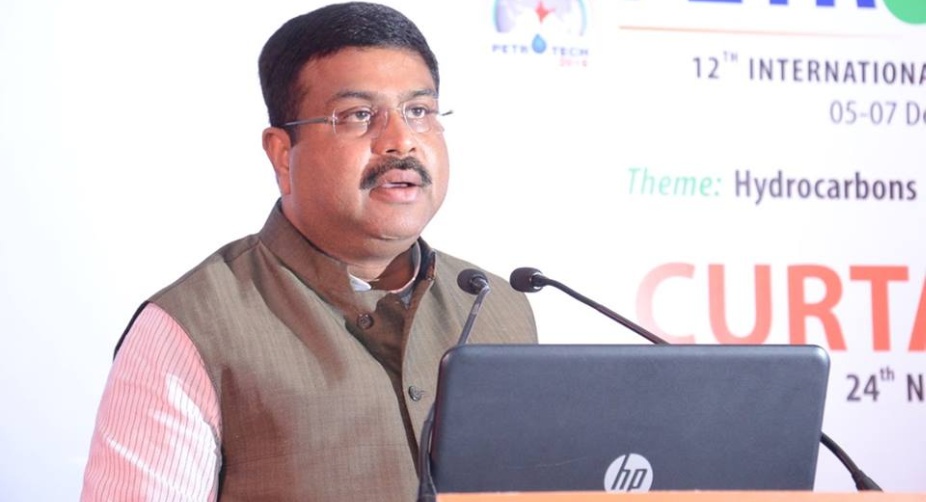Petroleum Minister Dharmendra Pradhan has clarified that Budget 2017-18's bare announcement of the government intent to merge state-run oil companies into a single entity will actually mean creation of multiple entities. The proposal, though welcomed by industry officials, has drawn mixed reactions from analysts, who see multiple challenges in it.
"It will not be one company. It will not be wise to put all eggs in one basket. There will be multiple companies…but all these will be integrated," Pradhan told reporters here following the budget presentation earlier last week.
Advertisement
He elaborated that each new company would deal with aspects of the entire value chain such as exploration and production, refining and marketing.
Reviving a proposal first mooted more than a decade ago by then Petroleum Minister Mani Shankar Aiyar during the first UPA government, Finance Minister Arun Jaitley in his Budget 2017-18 said: "We propose to create an integrated public sector oil major which will be able to match the performance of international and domestic private sector oil and gas companies."
"We see opportunities to strengthen our CPSEs (cenrtal public sector undertakings) through consolidation, mergers and acquisitions. Possibilities of such restructuring are visible in the oil and gas sector."
Without spelling out more details about the proposed merger, Jaitley said combining them will increase their bargaining and risk-taking capacity.
It "will give them capacity to bear higher risks, avail economies of scale, take higher investment decisions and create more value for shareholders," he said.
Among the 13 state-run oil companies being considered for merger are the explorer Oil and Natural Gas Corporation (ONGC) and Oil India, oil marketers Indian Oil Corp, Bharat Petroleum, Hindustan Petroleum, Mangalore Refinery and Petrochemicals, Chennai Petroleum and Numaligarh Refinery, and gas import and transportation utilities GAIL and Petronet LNG.
"A much bigger entity will give us bigger negotiating power in almost all activities globally such as the purchase of crude, technology, R&D expertise, as well as faster decision making," ONGC Chairman D.K. Sarraf said.
"The new entity will have economies of scale, which will also contribute to improved stability of the industry because of integration," he added.
"A merged entity can give the benefit of a sheer size of resources which is so far not available to any of the oil and gas companies individually," said Hindustan Pteroleum Chairman M.K. Surana.
Analysts, however, were guarded in their reaction, in view of the fact that the official committee that studied the matter in 2005 had advised against a merger at the time as it felt the process could be lengthy and problematic.
"I think the motivation is right but the government has to be very careful in going ahead with the merger as that can take a lot of time in integrating cultures of various companies and the market conditions could also change," said Anish De, Partner at KPMG in India.
"The integration may take more than a year, unless the government has already done considerable groundwork. These are all listed entities and the pros and cons of such a move need to be assessed carefully," said Debasish Mishra, Partner at Deloitte Touche Tohmasu India.
"The move will not have an immediate impact on the sector. The planning and setting up of such a corporation will take 2-3 years and the results will be apparent in a 4-5 years' time," said Deepak Mahurkar, Partner at PwC India.
"Historically such amalgamations have been successful as it results in strengthening of balance sheets as margins improve due to economy of scale," ratings agency ICRA's Senior Vice President K. Ravichandran said.
"However, such an integration will have challenges when it comes to manpower strength due to differing HR policies of PSUs," he added.











